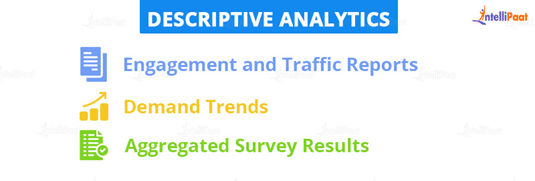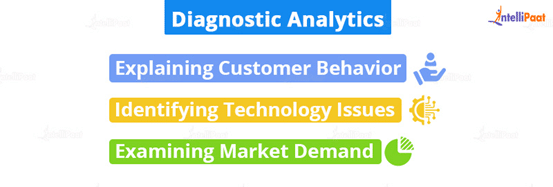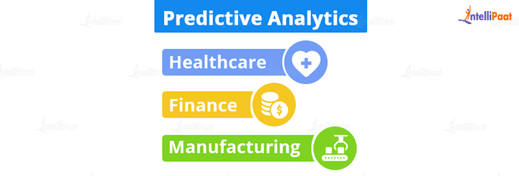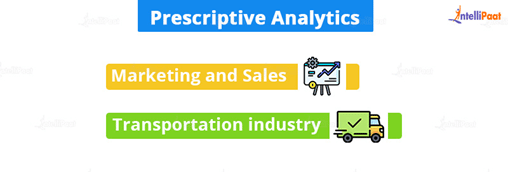Types of Data Analytics
Table of Contents:
- Understanding Data Analytics
- History of Data Analytics
- Types of Data Analytics
- Data Analytics Technologies
- Conclusion
Here you can Watch Intellipaat’s Data Analytics Full Course
Understanding Data Analytics
Data analytics can be defined as the science of analyzing unprocessed data to get conclusions from it. Data analytic strategies help you collect raw data and identify patterns to draw practical insights. Data analytics is now a standard of the primary research of data experts. Many businesses also employ data analytics to help them make wise choices.
The phrase “data analytics” is very broad and encompasses many different types of data analysis. This can be applied to any form of data to gain information that can be utilized to improve things. For instance, gaming companies employ data analytics to create prize schedules for players which keep the majority of players active in the game. Similarly, various sorts of businesses use data analytics to meet their specific demands.

History of Data Analytics
Spreadsheets were traditionally the preferred tool for manually comparing statistics and evaluating data for business insights. Beginning in the 1970s, organizations started utilizing electronic technologies, such as relational databases, data warehouses, machine learning (ML) algorithms, web search engines, data visualization, and other tools with the ability to facilitate, speed, and automate the analytics process.
Modern data sources have also put a load on traditional relational databases and other tools’ abilities to input, search, and modify enormous amounts of data. These tools were created to manage structured data like names, dates, and addresses. Modern data sources that produce unstructured data include email, text, video, audio, word processing, and satellite imagery. These types of data cannot be handled and evaluated using traditional methods.
With advancements in technology, new tools started getting into the picture and the whole process of Data Analytics now is fairly simplified.
Master Data Analytics with our Big Data Training Course
Types of Data Analytics
Data Analytics is generally of four types. In this article we’ll be broadly discussing all four of them:
Descriptive Analytics

Suppose you want to find out yearly cost changes, monthly sales growth, the total number of customers, and revenue generated per customer. These all measure what your business has faced in the past, to prepare a report for all of them you’ll be using Descriptive Analytics. Descriptive analytics is the use of various types of past data to make comparisons.
Let’s discuss a few cases where you can apply descriptive analytics:
- Engagement and Traffic Reports: Reporting is one type of descriptive analytics. If your company tracks engagement through social media analytics or online traffic, you’re probably using descriptive analytics.
These reports are developed by comparing current metrics to previous metrics and visualizing trends using raw data generated when people visit your website, adverts, or social media content.
- Demand Trends: Additionally, descriptive analytics can be used to figure out patterns in customer choice and behavior and use them to predict demand for particular goods or services.
Music streaming giant Spotify is a good example of how descriptive analytics can be used by a business. Spotify analysts track user behavior and their streaming patterns to determine which tracks are in high demand and accordingly use that data to prepare their trending list.
- Aggregated Survey Results: Descriptive analytics can also be used for market research. When it comes to gaining information from the survey and focus group data, descriptive analytics can assist in identifying links between variables and patterns.
For instance, you might carry out a poll and discover that as users’ ages rise, so does their propensity to buy your goods. If you have repeated this survey over several years, descriptive analytics would reveal if the age-purchase connection has always existed or whether it was a trend that only happened this year.
Diagnostic Analytics

Diagnostic analytics is a subset of analytics that seeks to answer the question, “Why did this happen?” Diagnostic analytics could also be used for data drilling and data mining. Companies may need to analyze various data sources, maybe including external data, to understand the core cause of trends.
Let’s discuss a few of the examples:
- Explaining customer Behavior: For businesses that collect user data, Diagnostic analytics is a secret key to gathering customer data and understanding why customers behave the way they do. These observations can further be used to improve brand messaging, user experience, and product-audience fit.
- Identifying Technology Issues: Running tests to identify the root of a technology issue is one example of diagnostic analytics that needs the usage of a software program. You may have done this before when having computer problems; it is commonly known as “running diagnostics.”
- Examining Market Demand: Determining the reasons behind product demand is another application of diagnostic analytics.
Predictive Analytics

As the name suggests, Predictive analytics alludes to a future prediction. It combines diagnostic and descriptive analytics for identifying special cases and predicting future trends, making it an important device for estimation. Predictive analytics sits alongside advanced analytics types, bringing several benefits such as complicated analysis based on machine or deep learning.
Predictive analytics examples include:
- Healthcare: Predictive analytics makes sure patients with urgent medical needs can receive care more quickly by identifying which patients are at high-risk. Simultaneously, healthcare practitioners can make better use of their time and resources.
- Finance: Financial institutions can manage cash flow more effectively by predicting which customers or companies would likely forget to make their next payment. By reminding potential late payers, they can also take action to reduce the issue.
- Manufacturing: Manufacturing managers can track the performance and condition of equipment and detect failures by integrating predictive analytics into their systems. To minimize any effects on production, they might prepare ahead of time and shift the burden to other equipment.
Prescriptive Analytics

The goal of prescriptive analytics is to advise on how to avoid a future problem or benefit from a potential trend. Prescriptive analytics uses cutting-edge tools and technology like machine learning, and algorithms, making it easy to implement and administer.
Examples of prescriptive analytics:
- Marketing and Sales: Large volumes of customer data are available to marketing and sales organizations, and this information may be used to develop the best possible marketing strategies. For example, knowing how to price things and what kinds of products go well together is one of these tactics. Since they are no longer limited to acting purely on instinct and experience, prescriptive analytics enables marketers and salespeople to be more exact with their campaigns and client outreach.
- Transportation industry: Cost-effective delivery is essential to achieving growth and profit in the package delivery and transport sectors. Time and money can be saved by reducing energy use through better route selection and resolving logistical problems like inaccurate delivery destinations.
Data Analytics Technologies
Analyzing various kinds of data sets to derive useful information is known as data analytics. For organizational decision-making, data analytics is utilized to find hidden patterns, market trends, and consumer preferences. Data analytics involves some technologies such as:
- Machine learning: Data analytics depend on machine learning, a branch of artificial intelligence that contains algorithms with self-memorizing capabilities.
- Data Mining: Data mining is the act of extracting vast amounts of data to identify patterns and discover relationships. It allows you to search through large datasets and identify relevant information.
- Data Management: The first step in data analysis is to understand how data enters and leaves your system. Then you must maintain that data organized, as well as examine the quality of the data and store it in a secure location. So, putting together a data management program helps ensure that everyone in your firm is on the same page when it comes to data governance and management.
Career Transition
Conclusion
Data is critical for any organization because it allows them to better understand their customers, improve their advertising strategies, and extend their bottom lines. There are many benefits to data, but you can’t make use of them without the right tools, therefore data analytics procedures and tools are very important.
While raw data is quite powerful, data analytics is what unlocks the potential to grow your business. As a result, we can state that data analytics is highly crucial in the growth of any business because it assists the organization in maximizing its performance.
Check out this Amazing Data Analytics Course by IIT Madras!
The post Types of Data Analytics appeared first on Intellipaat Blog.
Blog: Intellipaat - Blog
Leave a Comment
You must be logged in to post a comment.




























